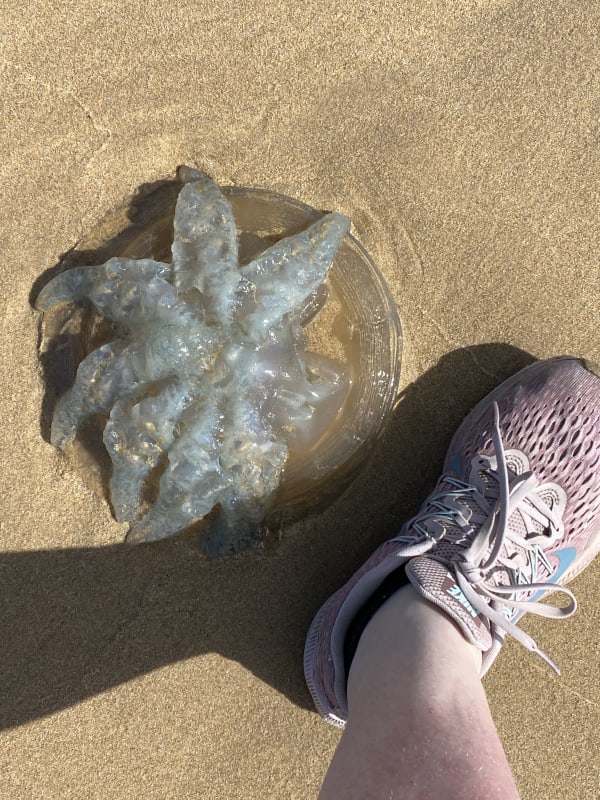I’m just going to come out and say it, while they are problematic and can lead to misidentification, I love common names.
For example, take the common name for the Catostylus mosaicus. This regularly encountered jellyfish has a couple of brilliant names: ‘jelly blubber’ and ‘blue blubber jellyfish’. You can almost feel their squishy texture as you say the words.
If you’ve been doing some beach-combing over the past few weeks, you may have noticed quite a few of these washed up with the tide. If you’ve been especially lucky like I was, you may have found some still alive in rockpools, and watched their mesmerising way of moving, their mushroom-like bell pulsing gently underneath the water.

These jellies are big, dinner-plate-sized animals. And while they’re known as ‘blue blubbers’, they actually range from cream to brown to blue (that old common name causing confusion again) depending on the algae in the location that they are in.
Friend or foe?
They have stinging cells, known as nematocysts, along their textured, oral arms. These cells help the jelly to catch prey, such as plankton, crustaceans and even small fish.
As for the effect on us humans, they can sting, but not with the intensity of say a bluebottle.
They're generally seen to cause a mild irritation and are not considered dangerous. Still, like pretty much everything, look but don’t touch when it comes to the animal world.
I did help a few beached animals that were very much still alive by digging underneath them and scooping them up along with a layer of wet sand to keep some distance between the nematocysts and my skin, but then I like to live dangerously.
The swarms of jellies tend to occur from Summer to Autumn so depending on the wind, you might still get a chance to see these beautiful creatures up close. To read more about their lifecycle head here.









